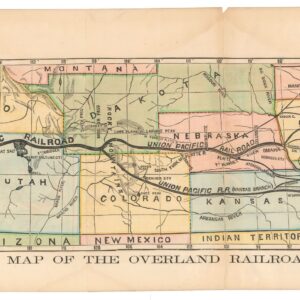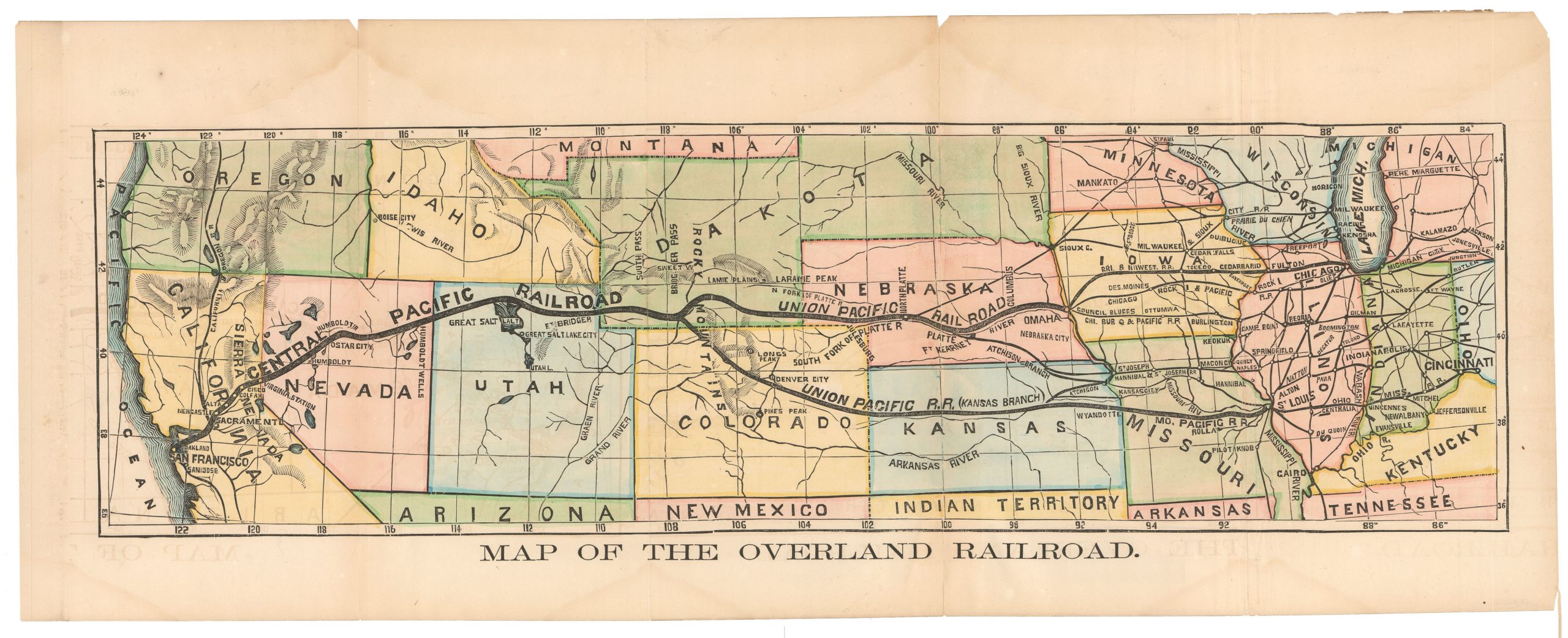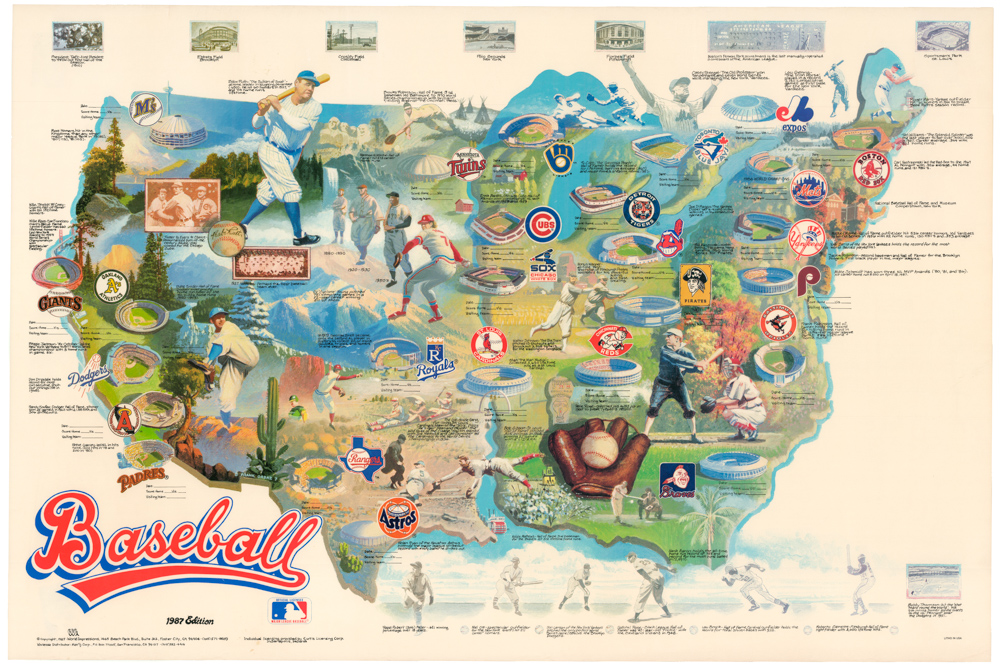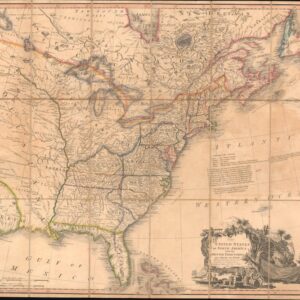From city to metropolis: Matthew Dripps’ rare folding map of New York.
Map of New York and Vicinity.
$1,200
1 in stock
Description
A scarce pocket map of New York and its environs made by Irish-American mapmaker Matthew Dripps. Dripps was an emigrant who settled in New York in 1850 and created a successful map-publishing business. The key to his success was focusing on New York undergoing rapid expansion and change. Dripps’ breakthrough was an enormous wall map of Manhattan issued in two parts and published in 1851. Following this, Dripps produced a range of New York-oriented maps that have since become iconic collector’s items.
In 1864, Dripps achieved a popular breakthrough with his map of Manhattan. In addition to providing up-to-date coverage, part of what made this map successful was the detail and vibrant coloring of New York’s neighborhoods. The map was nevertheless a smaller sheet map, similar to those he produced for the New York City Council, and so the following year, he decided to update and expand his Manhattan map.
In 1865, Dripps issued perhaps his most famous compilation: Map of New York and Vicinity. This large format map showed Manhattan Island in its most up-to-date form, including parts of Brooklyn, Queens, Hoboken, and Jersey City. As was common in Dripps’ output, the map captures the city impeccably, with every street and block of Manhattan identified. An inset along the left border details the northern portion of Manhattan. In addition, labeling the piers in lower Manhattan depicts many individual buildings (identified by a numbered legend) and an incredibly detailed Central Park, which was still being constructed at this stage. Even outside Manhattan, Dripps strives to provide the latest features and most up-to-date labels.
The 1865 map became a huge success. However, despite Matthew Dripps’ efforts to portray New York in its most up-to-date state, the city’s urban development was so rapid that soon revised editions were called for. Dripps met this demand by issuing several new versions of his iconic map. In many cases, the large maps would be folded up and issued as case-folding maps for use on the go. Primary among these new editions of the map was the 1875 issue, which made a decade of urban development in New York very tangible. By then, not only was Olmstead and Veaux’s iconic Central Park about to be opened to the public (1876), but all of the surrounding areas had by then been fully urbanized. Nowhere is this development better exemplified in the inset of North Manhattan, which in 1865 showed very little habitation and infrastructure beyond Trinity Church Cemetery but which by 1875 had undergone massive changes.
Like the original 1865 edition, the 1875 map is large (60 x 96 cm) and highly detailed, providing information about almost every aspect of the city. In addition to street names and block numbers, Dripps shows the routes of steam-driven railroad and horse cars, delineating the city’s fire districts and ward boundaries. A decorative border frames the large map, which folds neatly into a small embossed case with gilt lettering that fits right in a jacket pocket. This was a modern map made for modern people.
Context is Everything
The latter half of the 19th century was a transformative time for New York City. It was characterized by rapid urbanization and profound social changes. The city expanded its infrastructure, and the population boomed from waves of European immigrants. The political organization of Tammany Hall (also known as the Society of St. Tammany, the Sons of St. Tammany, or the Columbian Order) wielded immense power during this period, often engaging in corrupt practices that siphoned city funds for personal gain. Despite this corruption, Tammany Hall also played a pivotal role in providing services to immigrants and the working class, facilitating their integration into American society. The stark contrast between the luxurious lifestyles of the wealthy and the squalor of New York’s poor was made plain in areas like the Five Points, which was notorious for its crime and poverty.
Amidst these urban challenges, New York City witnessed remarkable advancements in public works and infrastructure. The creation of Central Park, spearheaded by Frederick Law Olmsted and Calvert Vaux, represented a milestone in urban planning and renewal. Completed in 1876, the park offered an essential green space for the city’s growing population, providing a much-needed respite from the congested urban environment. Central Park was not only an engineering marvel but also a social experiment aimed at fostering a sense of community among New Yorkers of all classes. Its success inspired other cities to develop similar public spaces, cementing its legacy as a pioneering model of urban recreation.
The consolidation of Brooklyn, Greenpoint, and Williamsburg into a single municipality in 1855 also instigated significant alterations to New York’s demographic and economic landscape. Upon its completion, this consolidation made Brooklyn the third-largest city in the United States and laid the groundwork for the eventual incorporation of the Burroughs into Greater New York City in 1898.
The expansion facilitated better coordination of resources and services, promoting economic growth and development. The completion of the Brooklyn Bridge in 1883, connecting Manhattan and Brooklyn, symbolized this newfound unity and played a crucial role in the city’s continued growth. Developments such as these allowed New York City to emerge as a global metropolis by the turn of the century.
Cartographer(s):
Matthew Dripps (1812 – 1896) was an American mapmaker active in Philadelphia and New York during the second half of the 19th century. Dripps was born in Ireland and worked as a grocer in Belfast during his youth. In 1849, he emigrated to the United States, booking passage on a steamer from Belfast to Philadelphia, where he worked as a tax collector. Dripps’ first map was of Philadelphia and was compiled during Dripps’ first year in the United States. By 1850, Dripps moved to New York, setting up a map publishing business in Brooklyn. He knew that for his company to be successful, he needed to make his mark as a mapmaker, so he began working on a monumental mapping of Manhattan. The project took almost two years to complete, but it got the right people’s attention – including the New York City Council, who began relying on Dripps’ maps for official purposes like the census.
Following his initial success, Dripps soon specialized in city maps – especially of New York and Philadelphia. He published many different maps, ranging from monumental to pocket-sized. Among his output were several key maps of Brooklyn, which was undergoing massive and rapid development at the time. In some cases, his maps were explicitly made for local authorities like the New York City Clerk’s office. In many cases, Matthew Dripps would issue revised editions of his maps, updating old templates with new neighborhoods and land developments.
In his private life, Dripps was married and had six children. He was buried at Greenwood Cemetery in Brooklyn after his death in 1896.
Condition Description
Folds into original pocket case. Some staining on left side, not affecting image. Typical of folding maps of this era. Minor wear along fold lines and at edges.
References




![[AMERICAN REVOLUTION] Boston, George Washington, Franklin, Philadelphia, Washington, D.C.](https://neatlinemaps.com/wp-content/uploads/2024/05/NL-02090a_thumbnail-300x300.jpg)
